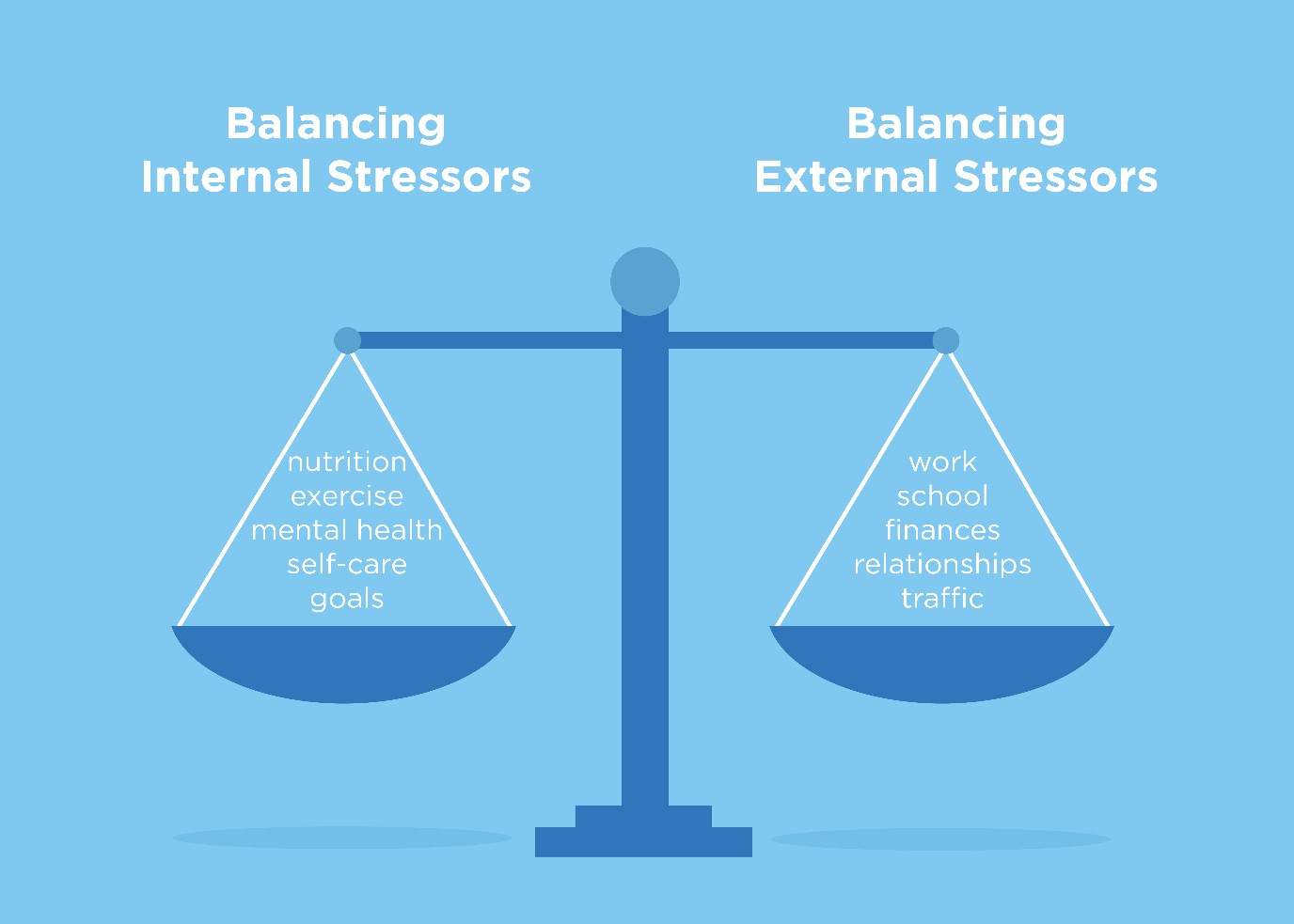Stress Management
- Stress is a natural part of life. It’s your body’s physical & psychological response to any demand for change.
- There is such a thing as “good” stress; it can motivate you to be productive and get things done.
- Everyone responds to stressors differently. What one person considers stressful, might not seem that way to someone else. It’s important to find your optimal level of stress or balance. This is the level at which you are the most motivated.
Some common stressors for Cal Poly Pomona students include school, work, relationships, traffic/parking, and finances. It’s important to find a balance between your responsibilities that may be causing too much stress and ultimately affecting your health.

Chronic stress, or constant stress experienced over a long period of time, can contribute to long-term health problems. Here are some signs that you may be stressed out!
Cognitive
- Memory problems
- Inability to concentrate
- Poor judgement
- Seeing only the negative
- Anxious or racing thoughts
- Constant worrying
Emotional
- Moodiness
- Irritability or short temper
- Agitation, inability to relax
- Feeling overwhelmed
- Sense of loneliness and isolation
- Depression or general unhappiness
Physical
- Aches and pains
- Diarrhea or constipation
- Nausea, dizziness
- Rapid heartbeat
- Frequent colds
- Headaches
Behavioral
- Eating more or less
- Sleeping too much or too little
- Isolating yourself from others
- Procrastinating or neglecting responsibilities
There are so many things you can do to manage stress! Here are some activities and resources you can use to control your stress level.
- Relaxation Techniques
-
- Deep Breathing
- Mindful Meditations
- Progressive Muscle Relaxation
- Directions:
- Sit with your hands held loosely in your lap and both feet flat on the floor.
- Loosen any constricting clothing.
- Tense and relax each major muscle group in your body, starting with the legs and feet and working up the body to the tongue and jaw.
- Notice the difference in feeling between tensed and relaxed muscles.
- Directions:
- The Quieting Exercise
- Directions:
- Sit comfortably.
- Suggest to yourself that you have an alert mind and a calm body.
- Breathe in and slightly tighten and raise your tongue, jaw and shoulders.
- As you exhale, start a relaxation wave going down your body by letting your tongue, jaw, arms and shoulders go loose.
- Look for sensations of flowing, heaviness and warmth going down your body.
- Directions:
- The Relaxation Response
- Directions:
- Sit quietly in a comfortable position.
- Close your eyes.
- Deeply relax all your muscles, beginning at your feet and progressing up to your face. Keep them relaxed.
- Breathe through your nose. Become aware of your breathing. As you breathe out, say the word “ONE” silently to yourself. For example, breathe IN . . . OUT “ONE;” IN . . . OUT “ONE;” etc. Breathe easily and naturally.
- Continue for 1 to 20 minutes. You may open your eyes to check the time, but do not use an alarm. When you finish, sit quietly for several minutes, at first with your eyes closed and later with your eyes opened. Do not stand up for a few minutes.
- Do not worry about whether you are successful in achieving a deep level of relaxation. Maintain a passive attitude and permit relaxation to occur at its own pace. When distracting thoughts occur, try to ignore them by not dwelling upon them and return to repeating “ONE.” With practice the techniques will come with little effort; however, wait two hours after any meals, since the digestive processes seem to interfere with elicitation of the Relaxation response.
- Directions:
-
- Make Stress Your Friend
- Find Your Balance
- Make an appointment with a Peer Health Educator to personalize your stress management. Call (909) 869-5272 to make an appointment for a stress management one-on-one session.